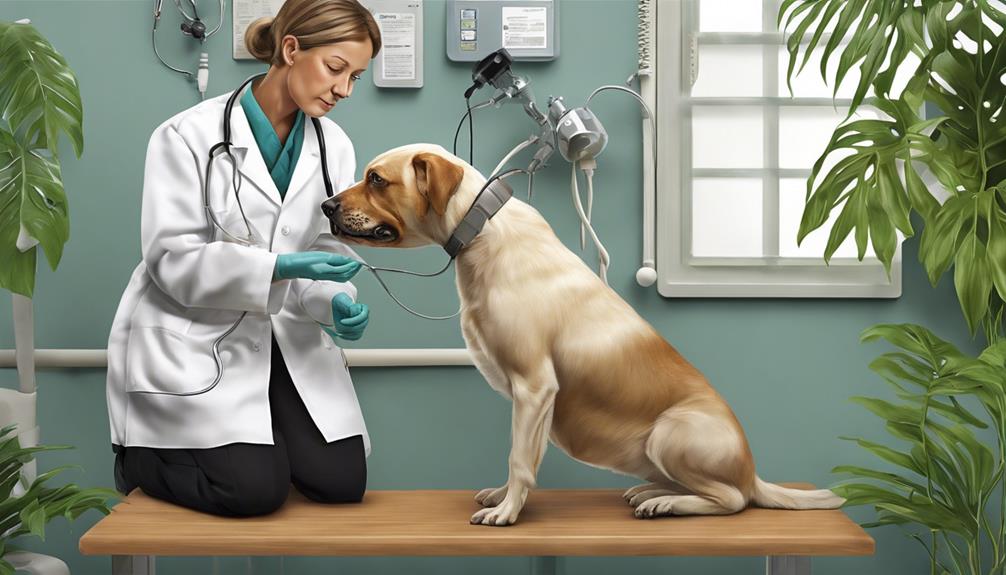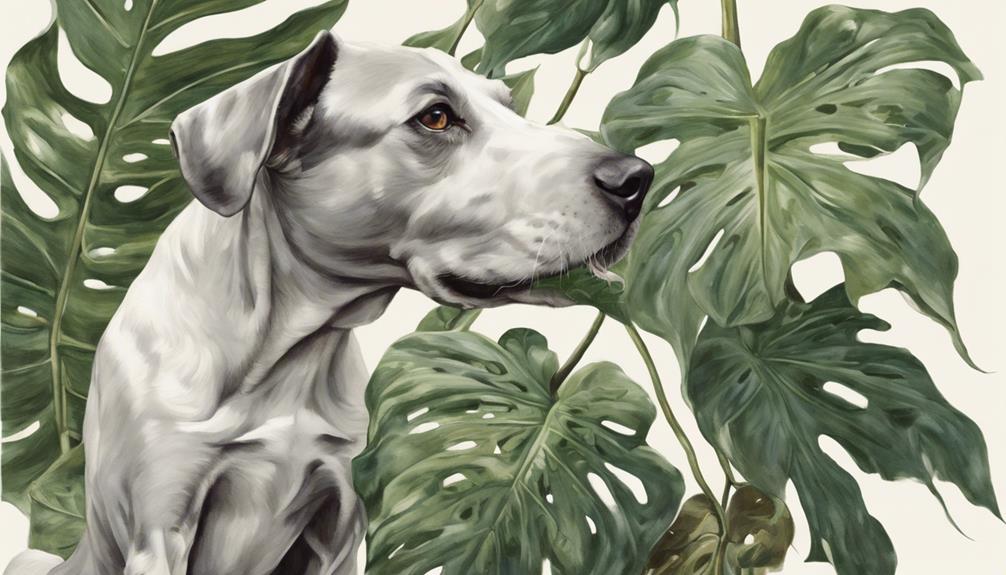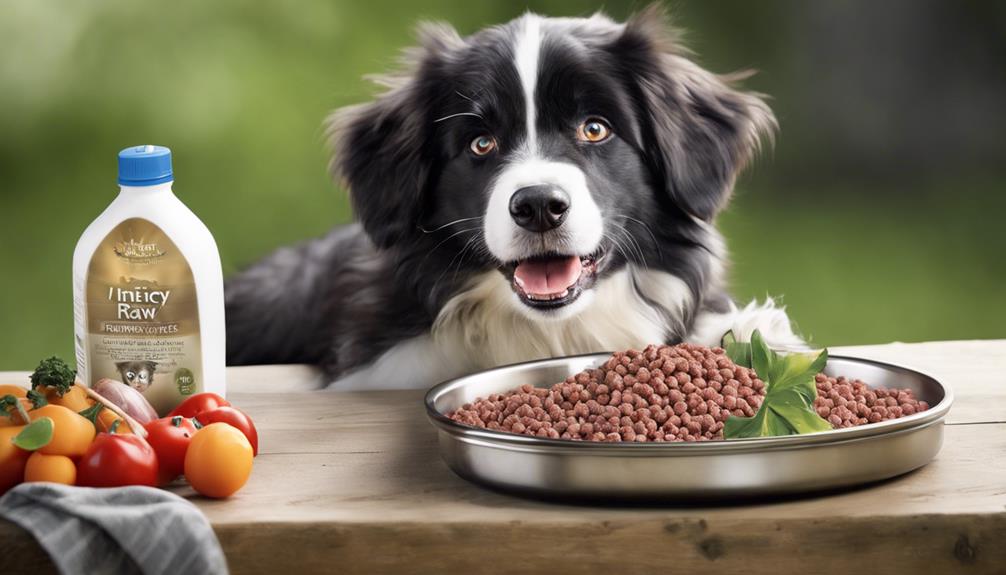Philodendrons can be harmful to dogs because they contain calcium oxalate crystals, causing issues like oral irritation, drooling, vomiting, and throat swelling when eaten. If your dog shows signs of ingesting Philodendrons, act fast. Wash their mouth with cool water, remove the plant, and watch for symptoms. Immediate vet help is crucial if things worsen. Prevent recurrence by keeping Philodendrons out of reach. Recognizing these risks guarantees pet safety.
Key Takeaways
- Philodendrons contain calcium oxalate crystals that can cause oral irritation and swelling in dogs.
- Symptoms of Philodendron toxicity in dogs include drooling, vomiting, oral pain, and breathing difficulties.
- Immediate actions for Philodendron ingestion include flushing the mouth, removing the plant, and monitoring for symptoms.
- Treatment for Philodendron poisoning may involve pain relief, fluids, gastroprotective medications, and monitoring for airway swelling.
- Prevent exposure by keeping Philodendrons out of reach, watching for signs of ingestion, and seeking veterinary help promptly.
Potential Dangers of Philodendrons for Dogs
When handling Philodendrons around dogs, it's important to be mindful of the potential dangers they pose due to the insoluble calcium oxalate crystals they contain. These crystals, found in various parts of the plant, can cause irritation and swelling if ingested by our furry friends.
If a dog chews on or consumes a Philodendron, the crystals can trigger reactions like oral irritation, drooling, vomiting, throat swelling, and difficulty swallowing. Immediate action is vital in such situations to prevent further harm.
Moving the plant out of reach and monitoring the dog for any signs of distress are essential steps to take. Remember, Philodendrons are beautiful additions to our homes, but their presence can be risky for our canine companions. By being aware of the potential dangers these plants harbor, we can guarantee a safer environment for our beloved pets.
Symptoms of Philodendron Toxicity in Dogs

Considering the potential dangers of Philodendrons for dogs, it's important to recognize the symptoms of Philodendron toxicity that can manifest in our canine companions.
Some common signs of Philodendron poisoning in dogs include:
- Excessive drooling: Dogs may drool more than usual after ingesting Philodendrons due to oral irritation.
- Oral pain: Dogs might exhibit signs of discomfort in their mouth, such as pawing at the mouth or reluctance to eat.
- Swelling of the upper airway: In severe cases, dogs may experience swelling in their throat, which can lead to breathing difficulties.
- Vomiting: Dogs may vomit as a result of ingesting Philodendrons, a common reaction to plant toxicity.
- Decreased appetite: A noticeable decrease in appetite can signal that a dog has consumed something toxic like Philodendrons.
Recognizing these symptoms promptly and seeking veterinary care is essential to safeguard the well-being of our beloved furry friends.
Immediate Actions for Philodendron Ingestion

Upon discovering Philodendron ingestion by a dog, promptly flush their mouth with cool water to remove toxins. This helps reduce the risk of irritation caused by calcium oxalate crystals present in the plant. Moving the Philodendron out of reach prevents further ingestion, minimizing the chances of more severe symptoms like swelling of the upper airway. Monitoring the dog for signs of upset stomach, such as drooling or vomiting, is essential. Immediate veterinary attention is vital if symptoms worsen or if there is difficulty breathing. Taking quick action can help alleviate the effects of Philodendron toxicity on dogs.
| Immediate Actions for Philodendron Ingestion | ||||
|---|---|---|---|---|
| Flush dog's mouth with cool water | Remove the plant | Monitor symptoms | Seek vet advice | Prevent re-ingestion |
| to remove toxins | from the dog's | Monitor signs of | Consult a vet | by moving the plant |
| environment | oral discomfort | if symptoms worsen | out of the dog's | |
| like drooling, | or breathing | reach |
Treatment Options for Philodendron Poisoning

To address Philodendron poisoning in dogs, veterinarians may recommend a combination of treatments tailored to the pet's specific symptoms and severity of ingestion. When dealing with Philodendron toxicity, it's vital to act promptly to alleviate any discomfort and prevent further complications. Here are some common treatment options for Philodendron poisoning in dogs:
- Flushing the pet's mouth: This helps remove calcium oxalate crystals present in the plant material.
- Pain relievers or antihistamines: Veterinarians may prescribe these to alleviate pain and swelling caused by Philodendron ingestion.
- Intravenous fluids: Administered to prevent dehydration in pets that have ingested significant amounts of the toxic plant material.
- Gastroprotective medications: Given to protect the stomach lining from the harmful effects of Philodendron toxicity.
- Monitoring upper airway swelling: Close monitoring is crucial until the swelling subsides to guarantee the pet's airway remains clear and safe.
These treatment options are essential in managing Philodendron poisoning in dogs and promoting their recovery.
Preventing Philodendron Exposure to Dogs

To keep dogs safe from Philodendron toxicity, it is important to proactively prevent their exposure to the plant. One vital step is to make sure philodendron plants are placed in areas that are inaccessible to your furry friends. Here is a helpful table to illustrate some key prevention measures:
| Prevention Measures | Description |
|---|---|
| Keep plants out of reach | Position philodendrons in high areas or behind barriers. |
| Monitor for ingestion | Watch for signs of chewing or attempts to eat plants. |
| Educate about symptoms | Learn about signs of plant toxicity in dogs. |
| Create a safe environment | Remove toxic plants and provide pet-friendly options. |
| Seek veterinary help | If ingestion occurs, contact a vet immediately. |
Frequently Asked Questions
What Happens if a Dog Eats a Philodendron?
If a dog eats a Philodendron, it can experience extreme mouth and throat irritation from calcium oxalate crystals. Symptoms like drooling, vomiting, and difficulty swallowing may occur. Immediate actions include rinsing the mouth with water and seeking veterinary care.
Philodendron poisoning can lead to pain, swelling, and gastrointestinal issues, requiring monitoring and treatment. Preventing dogs from accessing Philodendron plants is essential to avoid potential toxicity and health complications.
How Toxic Is Philodendron?
Philodendrons contain insoluble calcium oxalate crystals that can cause severe irritation in dogs if ingested. Symptoms like drooling, vomiting, and difficulty swallowing may occur.
Immediate action is crucial – move the plant out of reach and monitor for symptoms. Treatment may involve rinsing the mouth, acid reducers, and veterinary care.
Long-term effects vary, stressing the importance of prompt action and monitoring for adverse reactions.
Is Heartleaf Philodendron Toxic to Dogs?
Heartleaf Philodendron is toxic to dogs due to calcium oxalate crystals. Ingestion can lead to oral irritation, drooling, vomiting, and difficulty swallowing. If this happens, rinse the mouth, move the plant away, and watch for symptoms.
Treatment involves pain relief, fluids, and gastroprotective meds. Recovery is usually good for small ingestions, but monitor for lingering signs. It's essential to act fast and seek vet care if needed.
What Is the Most Poisonous Plant for Dogs?
We should be cautious about the most poisonous plant for dogs, the Sago Palm, due to its toxic cycasin content. Ingestion can swiftly lead to severe liver issues and even death for our canine companions.
Symptoms like vomiting, diarrhea, lethargy, jaundice, and seizures are immediate red flags. Quick action must be taken by seeking veterinary care if a dog consumes any part of a Sago Palm to avoid dire consequences.
Conclusion
To summarize, it's important to be mindful of the potential hazards of philodendrons for dogs. If your beloved companion consumes any part of this plant, it can result in significant health problems.
Remember to keep philodendrons out of reach and seek prompt veterinary care if ingestion occurs.
Stay watchful and prioritize your pet's safety to guarantee a happy and healthy life for your canine friend.










